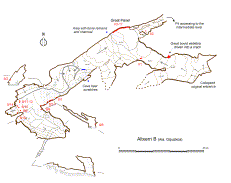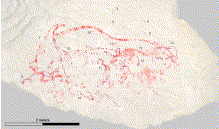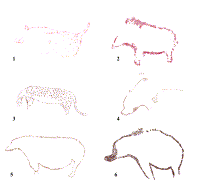C. González-Sainz, A. Ruiz-Redondo, D. Garate-Maidagan, E. Iriarte-Avilés
Source - http://www.sciencedirect.com/science/article/pii/S0047248413001851
Journal of Human Evolution
Abstract
The discovery and first dates of the paintings in Grotte Chauvet provoked a new debate on the origin and characteristics of the first figurative Palaeolithic art. Since then, other art ensembles in France and Italy (Aldène, Fumane, Arcy-sur-Cure and Castanet) have enlarged our knowledge of graphic activity in the early Upper Palaeolithic. This paper presents a chronological assessment of the Palaeolithic parietal ensemble in Altxerri B (northern Spain). When the study began in 2011, one of our main objectives was to determine the age of this pictorial phase in the cave. Archaeological, geological and stylistic evidence, together with radiometric dates, suggest an Aurignacian chronology for this art. The ensemble in Altxerri B can therefore be added to the small but growing number of sites dated in this period, corroborating the hypothesis of more complex and varied figurative art than had been supposed in the early Upper Palaeolithic.

Figure 2. Plan of Altxerri B Cave, marking the position of the samples taken for radiocarbon dating.
 Figure 3. Relevé of the Main Panel in Altxerri B, after a photograph. Isolated finger marks (3, 4, 5, 6), a bison (7), a feline (8), a possible animal's head (10), a bear (14) and two groups of three finger marks (15, 16) are shown, as well as other motifs more difficult to interpret.
Figure 3. Relevé of the Main Panel in Altxerri B, after a photograph. Isolated finger marks (3, 4, 5, 6), a bison (7), a feline (8), a possible animal's head (10), a bear (14) and two groups of three finger marks (15, 16) are shown, as well as other motifs more difficult to interpret.

Figure 5. Stylistic comparison. (1) Feline from Altxerri B; (2) bear from Altxerri B; (3) ‘leopard’ from Chauvet (from Clottes, 2001); (4) a panel from Chauvet with an association of a bear, a feline and two groups of three fingerprints, the same thematic as Altxerri B (from Clottes, 2001); (5) bear from Micolón (from Garate and González-Sainz, 2009); (6) bear from Arcy-sur-Cure (from Baffier and Girard, 1998).